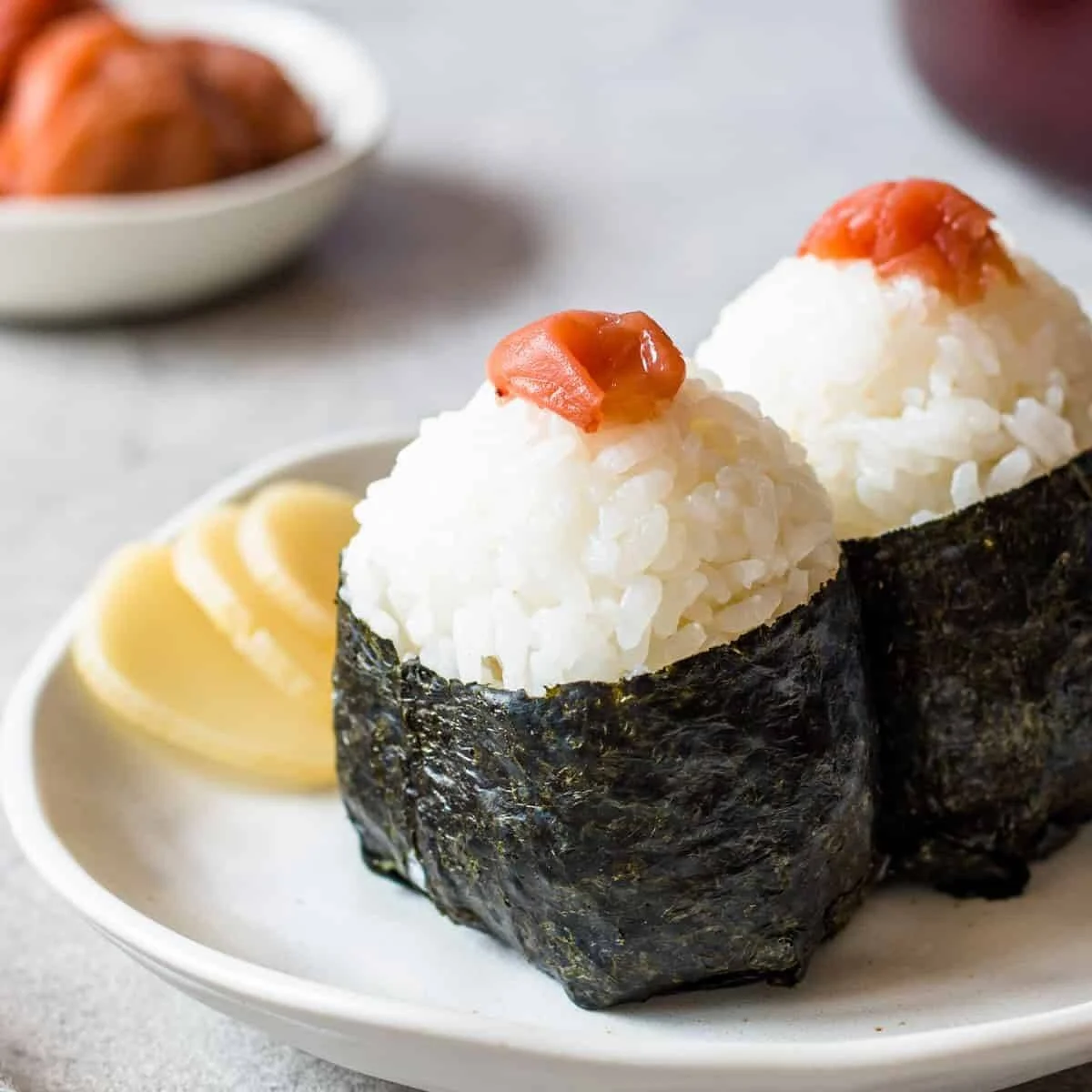Tangy, Salty, Legendary: Dive Into Japan’s Zestiest Superfood
It’s officially ume (plum) season in Japan, and as someone who grew up there, this time of year hits me right in the feels. Ume is one of those bold, unforgettable flavors that’s been part of Japanese culture and of course, my childhood for centuries.
So, Why Is Ume So Salty and Sour?
Great question. Traditional umeboshi (that’s the pickled and sun-dried version of ume) is intense. Like, puckers-your-whole-face intense. That’s because it’s preserved with a ton of salt and shiso leaves, not just for flavor, but to keep it shelf-stable before fridges were a thing. Back in the day, this was survival food. Now? It’s iconic.
I mentioned this in the newsletter, but my grandma used to make her own umeboshi at home. And not just a few jars, she had an underground storage room where she kept all her umeboshi and nukazuke (aka rice bran pickles). It felt like something out of a different world, kind of like how Korean families have a dedicated fridge just for kimchi. Her homemade umeboshi was no joke, so salty and sour! Your cheeks would involuntarily tighten the moment it hit your tongue. Honestly, it was a bit much for me.
So why do people in Japan keep eating it? Let’s move on.
The Secret Health Powers of Ume
Turns out, ume isn’t just good for your taste buds (once you get used to them). It’s also kind of a wellness legend in Japan. Here’s why:
Digestion boost: Feeling sluggish after a heavy meal? Ume’s got your back.
Energy kick: Samurai literally carried umeboshi into battle. Enough said.
Alkalizing effect: It may taste acidic, but it actually helps balance your body’s pH.
Natural detox: Citric acid in ume helps clear out the stuff that makes you feel tired and blah. No wonder it’s earned the nickname “The King of Alkaline Foods.”
How Do We Eat Ume in Japan?
Let me paint the picture. I grew up seeing umeboshi plopped right on top of white rice (hello, onigiri!).
One of my favorite memories growing up in Japan is the bento (lunch box) culture we had in school. My mom made my bento every single day without fail. I played basketball back then, so I needed serious fuel, not just to move my body, but also to keep up with my grades. She always packed a single umeboshi right in the middle of a bed of white rice, like a Japanese flag. Then she’d add two extra onigiri (rice balls) stuffed with umeboshi and wakame (seaweed), just to make sure my energy tank stayed full.
I recently went back to Japan, and for the first time since I graduated high school, which was 2015, she made me umeboshi onigiri again. I swear, the moment I took a bite, I almost cried. It’s wild how a simple food can hit you so deeply when it’s tied to a memory. Doesn’t it just taste different when your heart remembers?
Going back to“How Do We Eat Ume?”
It's also the secret ingredient in some seriously refreshing sauces, salad dressings, and even sushi rolls.
Then there’s umeshu, a sweet plum wine that totally changed the game for me when I first tried alcohol (beer was too bitter, then this was love at first sip).
And now? You can get ume-flavored seaweed, salts, and seasonings that make any meal 10x more interesting.
Yellowtail (hamachi) is in season this month
With ume in season too, I thought… why not combine them? I found some ume-based seasonings that go perfectly with yellowtail. Here are some of my Ume highlights from YAMA!
So yes, ume is sour, salty, and a little wild.
Here’s to trying bold flavors, embracing nostalgia, and maybe puckering your face a little along the way. You just might discover your new favorite thing.
Ready to join the ume club? Grab a bite, make a face, fall in love, and thank me later:)


